When it comes to constructing tugboats in the Philippines, shipbuilding companies in Cavite, Cebu, Subic Bay, Navotas, Batangas, and Manila have proven themselves as leaders in the industry. Known for their expertise in seafaring and naval engineering, these companies have successfully built and designed some of the most efficient and powerful vessels that navigate our waters. With a rich history rooted in maritime traditions, Filipino shipbuilders are sought after worldwide for their skillful craftsmanship and ability to construct high-quality tugboats that can withstand the toughest conditions at sea. In this article, we will explore some valuable tips and insights for Filipino shipbuilding companies looking to enhance their capabilities in constructing tugboats, ensuring they continue to excel on a global scale.
Click here to view our tugboat shipbuilding capabilities in Tanza, Cavite, Philippines.
The Importance of Tugboats in the Philippine Shipping Industry
Tugboats may seem small in size compared to massive cargo vessels and passenger ships, but their role in the Philippine shipping industry is of utmost importance. These sturdy workhorses provide vital assistance in navigating through narrow waterways, berthing and unberthing vessels, and facilitating safe operations within congested ports. Their agile maneuverability enables them to easily assist larger ships in tight spaces where precise control is required.
In a country like the Philippines, with its archipelagic geography consisting of thousands of islands and numerous shallow waters, tugboats play a crucial role in ensuring maritime transportation stays efficient and safe. They serve as indispensable assets for coastal trade activities as well as offshore operations such as oil rig support. Without tugboats, large vessels would face significant challenges accessing ports or carrying out operations in crowded waterways.
Moreover, tugboats contribute to minimizing environmental risks by preventing accidents or mishaps that could lead to spills or damage to marine ecosystems. Their powerful engines allow for prompt response to emergency situations like ship grounding or engine failure, ultimately reducing potential environmental hazards caused by stranded vessels. This adds another layer of significance to tugboats’ presence in the Philippine shipping industry.
Tugboats in the Philippine shipping industry play a crucial role in ensuring the smooth and safe movement of goods and resources across the archipelago. With over 7,000 islands scattered throughout its waters, navigating through the Philippines can be challenging for large vessels. Tugboats serve as reliable escorts, providing assistance to these ships as they maneuver through narrow channels and congested ports.
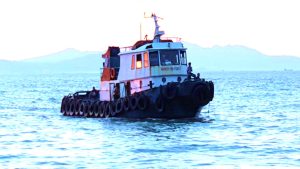
Understanding the Demand for Tugboats in the Philippines
Tugboats are often overlooked when discussing the maritime industry in the Philippines, but these powerful vessels play a crucial role in supporting and maintaining efficient operations. The demand for tugboats in the country is driven by various factors, including increasing maritime trade, expanding ports and terminals, and ongoing infrastructure development projects.
One key factor contributing to the demand for tugboats is the growing volume of maritime trade. The Philippines is strategically located in Southeast Asia, making it a vital hub for international shipping routes. As global trade continues to expand, so does the need for tugboats to assist with maneuvering large vessels into and out of ports.
Furthermore, as ports and terminal facilities continue to expand across the country, there arises a greater need for tugboat services. These versatile vessels are indispensable when it comes to safely guiding ships through narrow channels or congested areas within port limits. Additionally, they provide essential towing assistance for docking and undocking operations.
In addition to facilitating maritime trade growth and aiding port operations, ongoing infrastructure development projects also contribute to increased demand for tugboats in the Philippines. As new bridges are built over rivers and canals or coastal developments take place on islands across the archipelago nation, tugboats become instrumental in providing support during construction activities.
Understanding why there is a demand for tugboats in the Philippines is crucial for shipbuilding companies looking to seize opportunities in this sector.
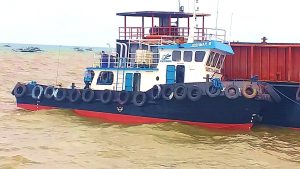
Historical background: Evolution of Tugboat Construction in the Philippines
The construction of tugboats in the Philippines has a rich history that dates back to the Spanish colonial era. During this time, traditional wooden boats known as banka were commonly used for towing and maneuvering larger vessels. These small but sturdy boats were built using local materials such as bamboo and hardwood, reflecting the ingenuity and resourcefulness of Filipino shipbuilders.
In the early 20th century, as maritime trade grew in the Philippines, there was a need for more powerful and efficient tugboats. This led to the introduction of steam-powered tugboats imported from Europe and America. These vessels revolutionized maritime operations in the country, enabling faster and safer towing of larger ships. The influx of foreign technology also influenced local shipbuilding practices, with Filipino craftsmen gradually adopting newer construction techniques.
Today, modern tugboat construction in the Philippines combines traditional craftsmanship with state-of-the-art technology. Local shipyards use advanced materials like steel alloys to ensure durability while maximizing fuel efficiency and performance. Moreover, Philippine shipbuilders are known for their expertise in customizing tugboats based on specific client requirements, allowing them to cater to a wide range of global markets. As demand for tugboats continues to rise worldwide, Filipino shipbuilding companies are poised to play a significant role in shaping its evolution through their innovative designs and dedication to quality craftsmanship.

Key Factors to Consider in Tugboat Construction in the Philippines
When it comes to constructing tugboats in the Philippines, there are several key factors that Filipino shipbuilding companies should consider. One crucial factor is the type of propulsion system that will be used on the tugboat. Traditional diesel engines have long been the standard choice, but with advancements in technology, there are now options for more environmentally-friendly alternatives, such as hybrid or electric propulsion systems. These newer systems not only reduce carbon emissions but also offer improved efficiency and maneuverability.
Another important factor to consider is the design and layout of the tugboat. Tugboats need to have a sturdy and compact design that allows for effective towing operations while still being able to navigate safely in tight spaces. Shipbuilders should carefully plan out the placement and arrangement of equipment, such as winches and tow hooks, to ensure optimal functionality without compromising stability.
Additionally, attention must be given to safety features during construction. Tugboats often operate in challenging conditions, such as strong currents or inclement weather, so incorporating safety measures like advanced navigation systems and robust hull construction is essential.
By taking into account these key factors during tugboat construction projects, Filipino shipbuilding companies can create vessels that meet international standards while also offering innovative solutions for a more sustainable future in maritime transportation.

Design and Engineering Specifications in Constructing Tugboats in the Philippines
In the world of Philippine maritime transport, tugboats play a crucial role in maneuvering large vessels in and out of ports. As the demand for efficient and reliable tugboats continues to rise, Filipino shipbuilding companies have been stepping up to the challenge. To successfully construct high-quality tugboats in the Philippines, attention to design and engineering specifications is essential.
When it comes to designing tugboats, one important factor to consider is their size and power. Tugboats need to be compact enough to navigate tight spaces in ports while still having sufficient power to tow massive ships. Balancing these requirements can be quite challenging but is necessary for optimal performance.
Additionally, engineering specifications must be carefully planned during construction. This includes selecting suitable materials that can withstand the harsh marine environment, ensuring proper stability for safe operations, and implementing effective propulsion systems for optimal efficiency.
By focusing on design aspects like size and power while considering key engineering specifications such as material selection and stability, Filipino shipbuilding companies can ensure that their constructed tugboats meet industry standards and fulfill customer demands. With continued advancements in design technology and close collaboration between designers and engineers, the future of Philippine-made tugboats looks promising.

Material Selection and Quality Control in Constructing Tugboats in the Philippines
Material selection and quality control play crucial roles in constructing tugboats in Cavite, Manila, Navotas, Subic Bay, Batangas, Cebu, and Olongapo. Tugboats are subjected to demanding conditions, including rough seas and heavy loads, so it is essential to choose materials that can withstand these strains. Shipbuilding companies in the Philippines need to carefully evaluate various factors such as strength, durability, corrosion resistance, and cost when selecting materials for tugboat construction.
One key consideration is the use of high-grade steel for the hull and superstructure of tugboats. Steel offers an excellent strength-to-weight ratio and is highly resistant to fatigue and corrosion. Additionally, coating systems should be applied to protect against corrosion in marine environments. It is essential to partner with reputable suppliers who provide certified steel with proper documentation to ensure its quality and authenticity.
Quality control during construction is equally important, ensuring that every aspect of the process meets international standards. This includes careful monitoring of welding techniques, an inspection of metal thicknesses, testing of coatings for adhesion and thickness, as well as thorough examination of all electrical systems on board. The implementation of a robust quality control system throughout the construction process ensures that any potential defects or inconsistencies are identified early on and corrected promptly.
By prioritizing material selection based on specific requirements such as durability and corrosion resistance while maintaining strict quality control measures during construction, Filipino shipbuilding companies can construct reliable and high-performing tugboats that meet international standards. Investing time and resources into these aspects will not only enhance their reputation but also contribute towards safer operations at sea.
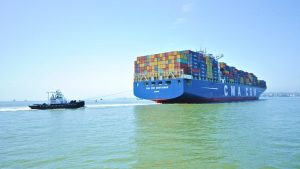
Compliance with International Standards and Regulations in Constructing Tugboats in the Philippines
Compliance with international standards and regulations is a crucial aspect of constructing tugboats in the Philippines. As the country aims to become a major player in the maritime industry, it is imperative for Filipino shipbuilding companies to meet global requirements. This not only ensures safety and efficiency but also enhances the reputation and competitiveness of Philippine-built tugboats in the international market.
Adhering to international standards and regulations is essential in guaranteeing that tugboats are built according to established guidelines and best practices. These standards, set by respected organizations such as the International Maritime Organization (IMO), cover various aspects of ship construction, including structural integrity, stability, fire safety, navigation equipment, and environmental protection. By following these guidelines, Filipino shipbuilders can demonstrate their commitment to quality craftsmanship and professionalism.
Moreover, complying with international standards allows for greater interoperability between vessels from different countries. Tugboats constructed in accordance with globally recognized regulations can seamlessly integrate into multinational operations or assist foreign ships during emergencies or ports of call. This flexibility increases the demand for Philippine-made tugboats not just within domestic waters but also across international boundaries.
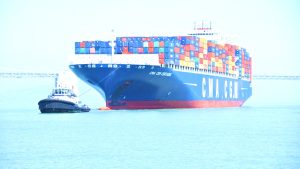
Leveraging Local Resources and Expertise in Constructing Tugboats in the Philippines
One of the key advantages that Filipino shipbuilding companies have in constructing tugboats is their ability to leverage local resources and expertise. The Philippines has a rich maritime heritage with a long history of shipbuilding and seafaring. This deep-rooted knowledge and experience are invaluable when it comes to constructing tugboats that can withstand the harsh conditions of the sea.
In addition to the wealth of expertise available, Filipino shipbuilders also have access to a wide range of local resources that can be utilized in the construction process. For example, the country has an abundance of skilled laborers who specialize in various aspects of shipbuilding, such as welding, carpentry, and electrical work. By tapping into this pool of talent, shipbuilding companies can ensure that their tugboats are built to the highest standards.
Moreover, utilizing local resources means reduced costs for both materials and labor. The Philippines is known for its affordable raw materials, such as steel and marine paint which are essential components in building high-quality tugboats. With lower production expenses, Filipino shipbuilders can offer competitive prices without compromising on quality.
By leveraging these local resources and expertise in constructing tugboats, Filipino shipbuilding companies can not only meet market demands but also establish themselves as leaders in the industry. Their ability to tap into centuries-old traditions coupled with cost-efficiency gives them a unique advantage over competitors around the world. With this combined strength, there is no doubt that Filipino shipbuilders will continue to excel in constructing world-class tugboats for years to come.
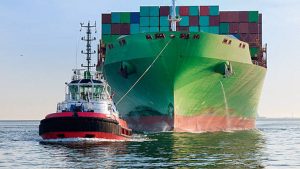
Collaboration with Local Shipbuilders and Suppliers in Constructing Tugboats in the Philippines
Collaboration with local shipbuilders and suppliers plays a crucial role in the construction of tugboats in the Philippines. By working with these professionals, shipbuilding companies can harness their expertise and access a wide range of resources, ultimately leading to the creation of high-quality vessels.
One key advantage of collaborating with local shipbuilders is their deep understanding of maritime regulations and norms specific to the Philippines. These experts are well-versed in the intricacies of building vessels that meet international standards while also complying with local laws. By tapping into this knowledge base, shipbuilding companies can ensure that their tugboats not only adhere to safety guidelines but also possess the necessary certifications for domestic and international operations.
Furthermore, partnering with local suppliers offers a valuable network for sourcing quality materials at competitive prices. From steel plates and marine engines to electrical components and navigational equipment, working closely with Philippine-based suppliers helps streamline procurement processes. This collaboration contributes to cost optimization without compromising on product quality—a critical consideration for efficient tugboat construction.
Collaboration between Filipino shipbuilding companies experienced local shipbuilders, and reliable suppliers is pivotal when it comes to constructing top-notch tugboats in the Philippines. Combining specialized knowledge and resource accessibility guarantees compliance with regulatory requirements while enabling cost-effective vessel manufacturing. This fruitful collaboration elevates the country’s reputation as a hub for robust maritime solutions—an achievement that benefits both local industries and global maritime trade alike.

Harnessing Filipino Skills and Labor Force in Constructing Tugboats in the Philippines
The shipbuilding industry in the Philippines has been steadily growing over the past decade, with more local companies venturing into constructing tugboats. This has been made possible through harnessing the skills and talent of the Filipino labor force, who have proven to be highly adept at shipbuilding. One of the key advantages of using Filipino workers is their strong work ethic and attention to detail, which are crucial traits for constructing high-quality vessels.
Not only are Filipino workers skilled in traditional shipbuilding techniques, but they also possess a deep understanding of modern technology and engineering principles. This makes them well-suited for constructing tugboats that require precision design and intricate mechanical systems. Moreover, their adaptability enables them to quickly grasp new concepts and implement innovative solutions when faced with challenges during construction. With these capabilities, it is no wonder that many foreign companies are turning to Philippine shipyards to build their tugboats.
By tapping into the rich pool of talent available locally, Filipino shipbuilding companies can establish themselves as leaders in constructing tugboats not only domestically but internationally as well. While offering competitive pricing compared to other countries known for shipbuilding, such as China or South Korea, is important, it is ultimately the quality of workmanship that sets Philippine shipyards apart. By continuously investing in skills development programs for their workforce and fostering partnerships with reputable international organizations, these companies can further enhance their expertise and reputation in this specialized field.
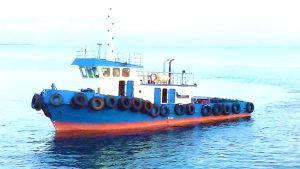
Meeting Customer Requirements and Expectations in Constructing Tugboats in the Philippines
Meeting customer requirements and expectations is crucial for any industry, and the shipbuilding sector in the Philippines is no exception. In constructing tugboats, Filipino shipbuilding companies need to prioritize customer satisfaction by ensuring that their vessels meet all the necessary requirements and exceed expectations. This entails understanding the unique needs of clients, such as desired vessel specifications, performance capabilities, and operational efficiency.
One way Filipino shipbuilders can excel in meeting customer requirements is by leveraging their expertise in customization. By offering tailored solutions, they can create tugboats that perfectly match each client’s specific demands. Whether it be accommodating special equipment or optimizing fuel efficiency, shipbuilders should work closely with customers to understand their vision and translate it into a functional reality.
Moreover, communication plays a vital role in surpassing customer expectations. Regular updates on the progress of construction help establish transparency and trust between shipbuilders and customers. Continuous collaboration throughout the project ensures that any changes or modifications requested by the client are addressed promptly while maintaining cost-effectiveness.
Ultimately, constructing tugboats that meet customer requirements involves a combination of technical prowess and attentive listening skills. By combining innovative design strategies with effective communication channels, Filipino shipbuilding companies can deliver superior vessels that take maritime operations to new heights of performance and reliability.
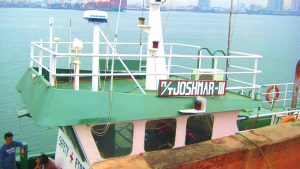
Customization and Adaptation to Specific Needs in Constructing Tugboats in the Philippines
Customization and adaptation to specific needs are essential aspects of constructing tugboats in the Philippines. Shipbuilding companies in the country understand that each client has unique requirements, and they have honed their skills to meet these demands effectively. By focusing on customization, Filipino shipbuilders can deliver tugboats that are tailored to the exact specifications of their clients.
One area where customization plays a crucial role is in the size and power of the tugboat. Depending on factors such as the location, water conditions, and intended use, different clients may require varying levels of horsepower for their vessels. Filipino shipbuilders excel at adapting to these needs by offering a range of engine options and working closely with clients to determine optimal power configurations. This level of flexibility ensures that each tugboat is designed for maximum efficiency and performance in its specific environment.
Additionally, customization extends beyond just technical specifications. Filipino shipyards also recognize the importance of customizing different areas within a tugboat for various purposes. For example, some clients may require specialized equipment or infrastructure for towing operations, while others may need customized crew cabins or cargo storage spaces. By adapting each area according to its intended use, shipbuilders can create functional and efficient spaces that meet every client’s unique requirements.
Customization and adaptation are vital components when constructing tugboats in the Philippines. By understanding individual client needs regarding size, power, and functionality, Filipino shipbuilders stand out from their competition by delivering highly customized vessels.

Efficient Delivery Timeframes and Cost-effective Solutions in Constructing Tugboats in the Philippines
One of the key factors in constructing tugboats efficiently and cost-effectively in the Philippines is ensuring optimal delivery timeframes. Shipbuilding companies need to streamline their processes and adopt efficient project management strategies to meet deadlines and avoid delays. This can be achieved by carefully planning the workflow, coordinating with suppliers, utilizing advanced technology, and having a skilled workforce that is capable of working seamlessly together.
Another aspect to consider for cost-effective solutions is optimizing material choices without compromising quality. The Philippines offers a range of locally available materials that can be used in constructing tugboats at competitive prices. By carefully selecting these materials based on their durability, performance, and affordability, shipbuilding companies can reduce costs significantly without compromising the overall quality of the vessel. Additionally, embracing sustainable practices such as recycling or repurposing certain materials can further contribute to cost-effectiveness while being environmentally friendly.
balancing efficient delivery timeframes with cost-effective solutions requires careful planning, effective project management techniques, optimization of locally available materials, and sustainable practices. By adopting these strategies and consistently refining their processes, Filipino shipbuilding companies can position themselves as competitive players in the global tugboat construction industry while providing high-quality vessels within reasonable timelines and budgets.
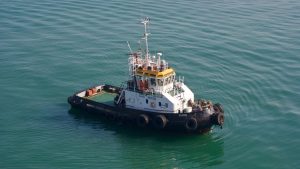
Step-By-Step Process in Constructing Tugboats in the Philippines
When it comes to constructing tugboats in the Philippines, shipbuilding companies follow a step-by-step process that ensures the production of high-quality vessels.
Constructing tugboats in the Philippines requires collaboration between naval architects, engineers, skilled craftsmen, electricians, plumbers, painters, and other professionals. The detailed planning involved in each step of construction ensures that these vessels meet international standards for safety and performance while being economically efficient. With their expertise and dedication to quality shipbuilding practices, the Philippine shipbuilding industry continuously strives for excellence in producing reliable and durable tugboats.
1. Design and Planning: Factors to Consider in Constructing Tugboats
Design and planning play a crucial role in the construction of tugboats. When building these powerful vessels, shipbuilding companies in the Philippines must consider various factors to ensure optimal performance and functionality. One important factor to consider is the size and weight of the tugboat. The design should be able to provide enough power to maneuver larger ships while maintaining stability and balance effectively.
In addition, the hull shape is another key element in tugboat design. A well-designed hull can minimize drag, enhance fuel efficiency, and improve maneuverability. Tugboats often need to operate in busy shipping channels or tight spaces near ports, so having a hull that allows for quick turns and efficient propulsion is essential.
Moreover, the placement of features such as winches, towing equipment, and fenders must be carefully planned during the design phase. These components play a critical role in enabling the tugboat’s primary function: assisting larger vessels with towing operations. Placing them strategically on board ensures easy accessibility and maximum efficiency when executing towing tasks.
By considering these factors during the design and planning stage of constructing tugboats, Filipino shipbuilding companies can create vessels that are not only powerful but also highly efficient performers in any maritime environment. It is through meticulous attention to detail that these companies can stand out from their competitors by delivering top-quality vessels that meet industry standards while also exceeding customer expectations.
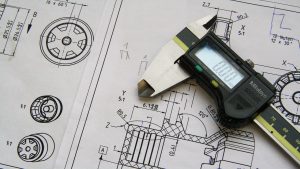
2. Process: Step-by-Step Guide to Constructing Tugboats
The construction process of building tugboats is a complex and meticulous endeavor that requires careful planning and precise execution. To start, the first step involves designing the blueprint of the tugboat, taking into consideration its intended use, size, and capabilities. Once the design is finalized, the next step is to gather all the necessary materials and equipment needed for construction.
With all the materials in place, construction can begin with the fabrication of the hull. Steel plates are cut and shaped according to specifications before being welded together to form the skeleton of the tugboat. The bulkheads and decks are then installed to strengthen their structure.
As construction progresses, various systems, such as propulsion, electrical, and hydraulic, are carefully integrated into the tugboat’s framework. The installation of engines, generators, pumps, and other vital components ensures that it will be fully operational upon completion.
Throughout each stage of construction, quality control measures are implemented to ensure that every aspect of the tugboat meets industry standards. This includes thorough inspections for structural integrity and adherence to safety regulations.
Meticulous attention to detail combined with skilled craftsmanship plays a crucial role in building reliable and efficient tugboats that can withstand demanding marine environments. From initial design concepts to final touches before launch day arrives — constructing a tugboat requires precision at every step along the way.

3. Testing and Certification: Ensuring Safety and Quality Standards
Testing and certification are crucial steps in the shipbuilding process to ensure that tugboats meet safety and quality standards. These steps help identify any design flaws, construction defects, or performance issues that could compromise the vessel’s integrity and operational efficiency. With maritime accidents becoming more common in recent years, it is essential for Filipino shipbuilding companies to prioritize testing and certification as an integral part of their operations.
One aspect of testing involves examining the structural integrity of the tugboat. This involves conducting various tests, such as hydrostatic pressure testing, which assesses whether the vessel can withstand water pressure at different depths. Additionally, destructive testing methods like fatigue testing determine how well a tugboat will hold up under constant stress and strain over its lifespan. By subjecting their products to rigorous structural tests, shipbuilders can ensure that their vessels are capable of withstanding even the harshest maritime conditions.
Certification is another critical aspect of ensuring safety and quality standards for tugboats. The International Maritime Organization (IMO) has established regulations such as SOLAS (Safety of Life at Sea) that all ships must comply with to guarantee safe operation. Filipino shipbuilding companies need to adhere to these regulations during construction and obtain necessary certifications from recognized classification societies like Lloyd’s Register or Det Norske Veritas Germanischer Lloyd (DNV GL). Independent third-party organizations perform inspections throughout various stages of construction, verifying compliance with international standards before issuing certification.

Challenges and Innovations in Constructing Tugboats in the Philippines
One of the major challenges in constructing tugboats in the Philippines is the lack of skilled labor. While there are many shipbuilding companies in the country, finding trained workers who have experience and expertise in building tugboats can be difficult. This shortage leads to longer construction times and potential quality issues.
However, despite this challenge, Filipino shipbuilders have continually innovated to overcome these limitations. One notable innovation is the use of modular construction techniques. By constructing sections of the tugboat separately and then assembling them later, shipbuilders are able to streamline production and increase efficiency. This approach not only saves time but also ensures better quality control, as each section can be thoroughly inspected before being integrated into the final vessel.
Another innovation that has revolutionized tugboat construction in the Philippines is the adoption of computer-aided design (CAD) systems. These advanced software programs allow shipbuilders to create detailed 3D models of their vessels before beginning actual construction. This helps identify potential design flaws or clashes early on, reducing rework and saving valuable resources.
While there are challenges associated with constructing tugboats in the Philippines, such as a shortage of skilled labor, Filipino shipbuilders have demonstrated their ability to innovate and overcome these obstacles through modular construction techniques and computer-aided design systems. These innovations not only improve efficiency but also enhance quality control during manufacturing processes. With ongoing advancements in technology and a continued focus on skill development, Filipino shipbuilding companies can further strengthen their position in this competitive industry.

The Significance of Philippine Tugboat Production
Local tugboat production plays a vital role in the growth and development of the maritime sector in any country. By producing tugboats locally, a country can boost its domestic shipbuilding industry, create job opportunities, foster technological advancements, and enhance national security. The Philippines is no exception to this trend.
One significant advantage of local tugboat production is the economic impact it has on the country. With more shipyards engaged in building tugboats, there will be an increase in employment opportunities for skilled laborers, engineers, technicians, and support staff. This not only reduces unemployment rates but also improves living standards for individuals and families involved in the shipbuilding process.
Furthermore, local production encourages innovation and technological advancements within the maritime industry. Filipino shipbuilding companies have an opportunity to collaborate with designers and naval architects to develop state-of-the-art features that meet international standards. This fosters a culture of continuous improvement and helps build a reputation for high-quality tugboats produced domestically.
In addition to economic benefits, local tugboat production enhances national security by reducing dependency on foreign suppliers. Having a robust domestic shipbuilding industry ensures that countries have reliable access to vessels critical for maritime operations such as towing, salvage work, harbor assistance, firefighting support, and offshore operations.
The significance of local tugboat production extends beyond just economic factors; it contributes to the overall growth of the maritime sector while creating new avenues for employment and technological advancements within the country’s borders.
Are You Looking for a Tugboat Shipbuilder in the Philippines?
When it comes to shipbuilding, expertise, and quality are of utmost importance. If you are looking for a tugboat shipbuilder in the Philippines, Amaya Dockyard & Marine Services Inc. (ADMSI) is the name to trust. With years of experience in the industry, ADMSI has established itself as a reliable and reputable shipbuilding company.
- Email us: info@amayadockyard.com
- Call our 24-hour hotline: +63 917 633 0479
- Viber: +63 917 633 0479
- WhatsApp: +63 917 633 0479
- Facebook Messenger: Click here
- Click here to inquire
What sets ADMSI apart is its commitment to providing not just high-quality vessels but also cost-effective solutions. They understand that efficiency plays a crucial role in today’s competitive market, and they strive to deliver ships that are not only well-built but also cost-efficient to operate. This commitment makes them an ideal choice for both local and international clients who are looking for value-driven shipbuilding services.
ADMSI’s dedication to client satisfaction is evident in its impressive track record. They have successfully delivered numerous tugboats over the years, meeting deadlines without compromising on quality. By partnering with ADMSI, you can expect a seamless construction process characterized by professionalism, open communication, and attention to detail.
So if you’re searching for a tugboat shipbuilder in the Philippines that can provide both quality and cost-effectiveness, look no further than Amaya Dockyard & Marine Services Inc. (ADMSI). Their vast experience, commitment to client satisfaction, and impressive track record make them an excellent choice for all your shipbuilding needs.

The Future and Opportunities for Growth in Constructing Tugboats in the Philippine Market
The Philippine market for constructing tugboats is experiencing a significant surge in demand, presenting numerous opportunities for growth and expansion in the shipbuilding industry. With the ever-increasing international trade and transportation activities, there is an escalating need for efficient and reliable tugboats to support port operations. This has paved the way for Filipino shipbuilding companies to position themselves as key players in this sector.
One major advantage that Filipino shipbuilders have is their skilled workforce. The country boasts a large pool of talented engineers, naval architects, welders, and technicians who are well-equipped to handle the complex requirements of constructing tugboats. Moreover, these skilled professionals come at a competitive cost compared to other countries in the region. This combination of expertise and affordability presents a compelling proposition for international buyers looking to invest in high-quality tugboats.
In addition to manpower capabilities, another factor contributing to the future growth of constructing tugboats in the Philippine market is government support and incentives. The Philippine government has recognized shipbuilding as a strategic industry that can contribute significantly to economic development through job creation and export earnings. As such, they have implemented various programs aimed at supporting local shipbuilders by providing access to financing options, tax incentives, infrastructure development initiatives, and skills training programs. These measures not only encourage local shipyards but also attract foreign investors interested in partnering with Filipino companies or establishing joint ventures.

Takeaway: Constructing Tugboats for Filipino Shipbuilding Companies
In conclusion, constructing tugboats is an opportunity for Filipino shipbuilding companies to tap into a growing market and showcase their expertise in the maritime industry. The tips provided can serve as a guide for ensuring successful construction projects that meet international standards and exceed client expectations.
By focusing on innovation, efficient project management, and skilled craftsmanship, Filipino shipbuilders can position themselves as leaders in the tugboat construction industry. It is essential to understand the specific needs of clients and tailor each project accordingly while also keeping up with emerging trends and technologies.
Furthermore, collaboration across different sectors of the maritime industry can lead to tremendous growth and development. Shipbuilding companies should foster relationships with government agencies, port authorities, shipping companies, and maritime organizations to stay informed about market demands and regulations. This interconnectedness will allow them to leverage opportunities for business expansion while making significant contributions to the overall growth of the sector.
Overall, Filipino shipbuilding companies like Amaya Dockyard & Marine Services Inc. in Tanza, Cavite, have the potential to thrive in tugboat construction by incorporating these tips into their practices. With a strong focus on quality, innovation, collaboration, and staying attuned to market dynamics, they can establish themselves as reliable partners in meeting global demand for efficient marine transportation solutions.
